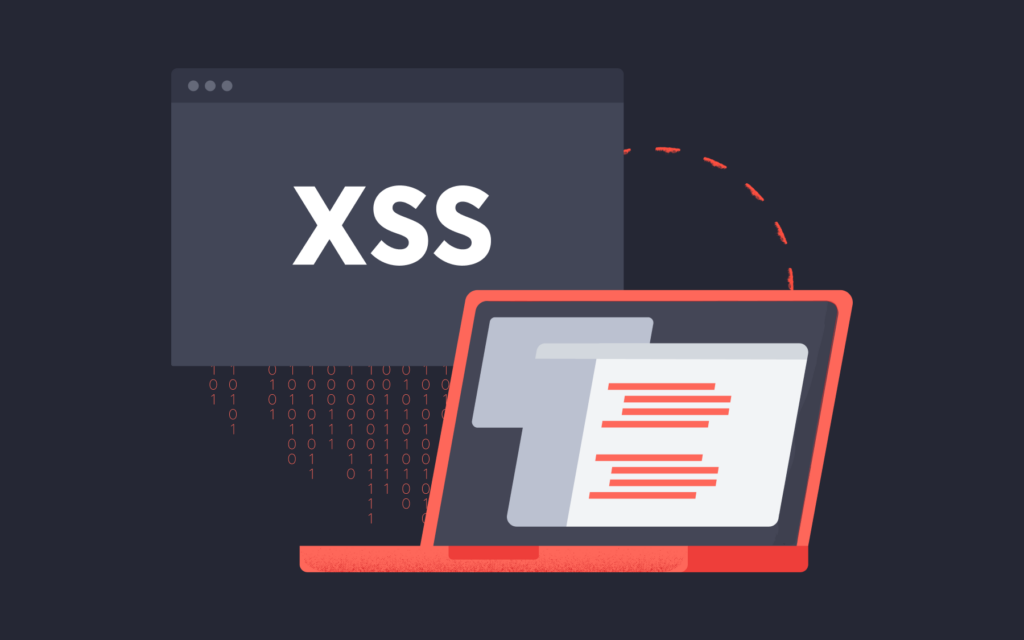
Cross-site scripting (XSS) represents a vulnerability exploited by attackers to inject code into a susceptible website. The vulnerability arises from how the website processes user input, typically in areas like contact forms, search fields, and other input forms.
In instances of XSS vulnerability, a malicious user embeds executable code, such as harmful JavaScript, into the input field. The compromised website then stores this code.
When another user requests the page, the malicious script becomes part of the response and is executed in the victim’s browser. This allows the script to perform various actions, including accessing the user’s cookies, session information, and other sensitive data. Once the attacker obtains the cookie, they can take control of the user’s session.
How Does Cross-Site Scripting Work?
There are two main types of XSS attacks: Server XSS and Client XSS. Both types can be executed through various methods, as explained below:
- Persistent XSS (Direct XSS)
In persistent XSS attacks, the attacker injects a malicious script that the server stores in its database or files. The script is then sent to the target victim when they receive a reply from the server, without the server or the victim being aware of the embedded malicious script. - Non-Persistent XSS (Indirect and Reflected XSS)
In non-persistent XSS attacks, the malicious script is sent to the user embedded in a server response linked to a vulnerable website. When the victim clicks on the link, the script payload is delivered. - DOM-based XSS
Unlike other XSS attacks, DOM-based XSS attacks execute malicious code by modifying the Document Object Model (DOM) environment. This is possible because modern web applications delegate logic to the client. Vulnerable websites that do not check URI contents will execute any embedded malicious code.
Why is Cross-Site Scripting Dangerous?
Cross-site scripting poses a significant threat as it enables attackers to inject arbitrary code into a vulnerable website. Typically, this is exploited to steal cookies, providing the attacker with unauthorized access to the victim’s website. Depending on the victim’s user account, the attacker can launch further attacks, such as data theft or even shutting down the website.
Examples of XSS Attacks in the Wild
One of the most notorious instances of XSS is the “Samy” malware, recognized as one of the fastest-spreading malwares in internet history. Exploiting unsanitized profile posts, Samy injected harmful JavaScript code, saved it in the database, and activated it whenever a user viewed the post. This mechanism facilitated the self-propagation of the worm to other users. In another incident involving Yahoo accounts, attackers orchestrated an account hijack through email phishing and XSS. They created a page featuring malicious JavaScript that pilfered cookies from unsuspecting visitors. The attack unfolded by sending an email containing a link purportedly leading to a popular news article. However, the link redirected to the attacker’s site housing the malicious code
How Cross-Site Scripting Can be Introduced to WordPress
XSS attacks are initiated by posting data to WordPress, including through forms. This implies that any form on a WordPress website could potentially be utilized for such an attack. While WordPress and many plugin developers incorporate checks to prevent XSS attacks through sanitization (verifying submitted data to ensure there is no malicious code), vigilance and a robust WordPress security policy remain crucial.
How to Protect Your WordPress Website from Cross-Site Scripting
In addition to maintaining vigilance and implementing a solid security policy, there are specific measures you can take to safeguard your WordPress website from XSS attacks:
- Only Install Trusted Plugins and Themes: Avoid installing nulled plugins and themes, opting instead for reputable ones with frequent updates, positive reviews, and reliable support.
- Keep Everything Updated: Regularly update your software, including plugins and themes, to patch vulnerabilities and enhance security. Developers release updates not only for security fixes but also for new features and improvements.
- Installing a Web Application Firewall like Wordfence can also help stopping this attack on its track. While a firewall will not fix a vulnerability, it will help to stop attempt at exploiting it.
- Scan your site with Vulnscanner AI. Vulnscanner AI scans your website and looks for vulnerabilities such as XXS, path transversal and more. With Vulnscanner AI you will be notified if your website is found vulnerable to this type of attack so you can take immediate action and fix it.
Conclusion
In this article we took a closer look at what XSS is and how it can affect our website. It is important to keep all software up to date, to install a web application firewall, and to keep scanning it with a vulnerability scanner such as Vulnscanner AI.
